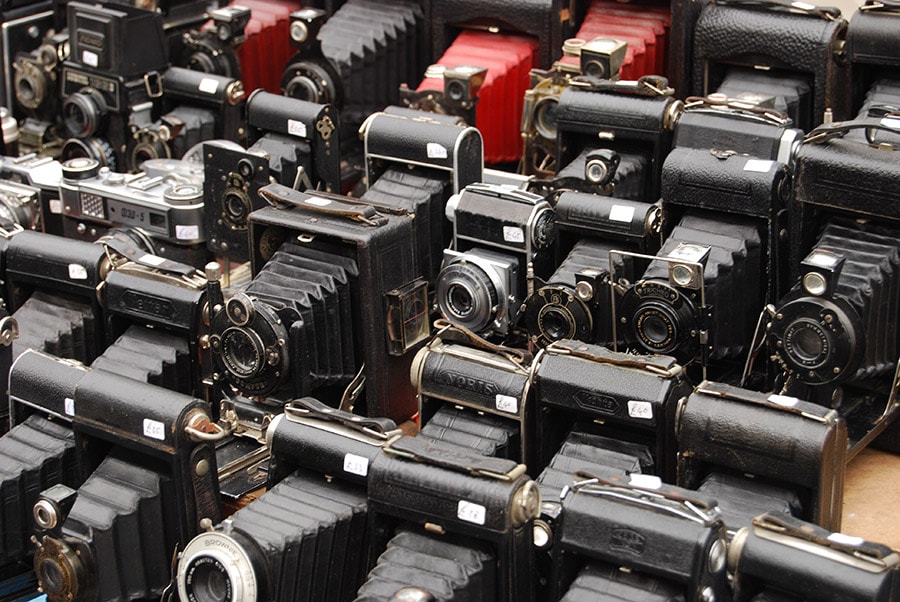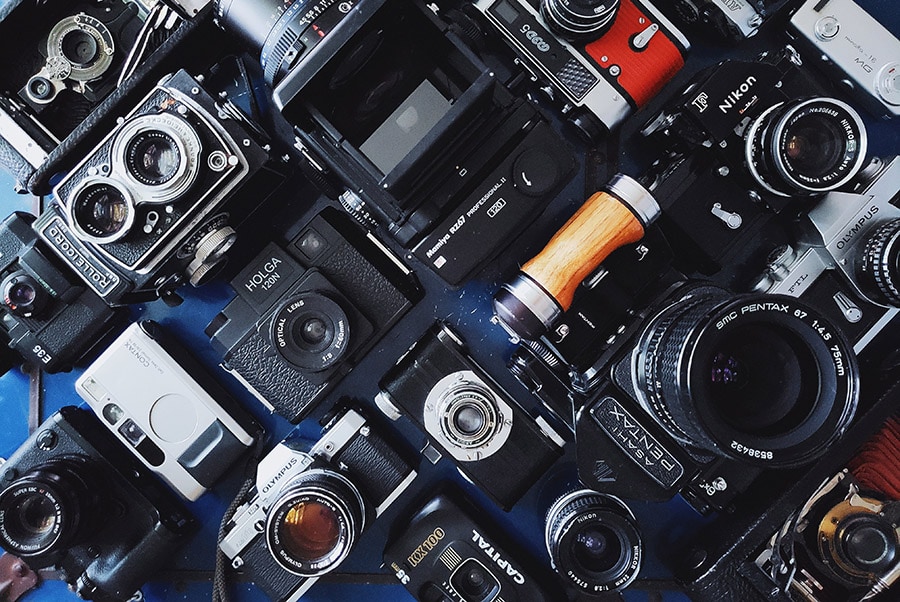“On Photography” by Susan Sontag – A Seminal Work on the Art and Impact of Photography
Susan Sontag’s “On Photography” is a groundbreaking work that first graced the literary world in 1977. This book has since etched its name as one of the most influential treatises on the subject. Sontag meticulously delves into the evolution and societal role of photography, tracing its journey from the idealistic early days to a more contemporary, sometimes cynical, perspective.
The book is not just a historical overview; it’s a profound exploration of how photography shapes and is shaped by society. Sontag contrasts the evocative works of photographers like Diane Arbus with the raw, unfiltered documentary photography of the Depression era. She presents a compelling argument, suggesting that the very act of capturing an image can, at times, create a detached, voyeuristic relationship with the world, potentially diluting the essence of real-life events.
What makes “On Photography” even more remarkable is its origin. The content is a curated collection of essays that Sontag initially penned for the New York Review of Books between 1973 and 1977. These essays, while individual in their topics, weave together to form a cohesive narrative, reflecting Sontag’s nuanced views on the role of photography in societies, particularly during the transformative 1970s.
The literary prowess of Sontag is evident in her writing style, which is both eloquent and assertive. Her arguments are not just academic; they are deeply polemical, challenging readers to reconsider their own perceptions of photography. The book’s critical acclaim is a testament to its significance, having been honoured with accolades such as the National Book Critics’ Circle Award for Criticism. Today, “On Photography” stands as a beacon for discussions on the impact and ethics of photography in our media-saturated world.
How long is “On Photography” by Susan Sontag?
As I mentioned before, Sontag’s book On Photography originally appeared as a series of essays in the New York Review of Books between 1973 and 1977. A single volume, depending on the edition, is usually between 207-224 pages long.
Each of the essays delves into different aspects of photography, its influence on society, and its philosophical implications.
- In Plato’s Cave
- America, Seen Through Photographs, Darkly
- Melancholy Objects
- The Heroism of Vision
- Photographic Evangels
- The Image-World
- A Brief Anthology of Quotations
“In Plato’s Cave” is perhaps the most renowned, drawing an analogy between the allegory of the cave from Plato’s “Republic” and the way photographs shape and limit our perception of reality. The essays collectively offer a profound critique of the omnipresence of images in contemporary society and the consequences of living in an era saturated with photographs.
Summary of “On Photography” by Susan Sontag
Susan Sontag’s ‘On Photography’ is a profound exploration of the role and impact of photography in modern society. Through a series of insightful essays, Sontag delves into the complexities of the photographic art form, from its historical evolution to its influence on our perceptions of reality. She critically examines the power dynamics inherent in capturing images, the ethics of representation, and the blurred lines between observer and observed. The book challenges readers to reconsider the act of taking photographs, urging them to be more conscious of the implications and responsibilities that come with the medium.
What is Susan Sontag known for?
Born in Manhattan in 1933, Susan Sontag was an intellectual powerhouse who left an indelible mark on the literary and philosophical landscape. Her academic journey took her to prestigious institutions like the University of Chicago, Harvard, and Oxford. Beyond her well-known commentary on photography, Sontag penned four novels, a collection of stories, several plays, and a series of influential essays, including the notable “Illness as Metaphor” and “Regarding the pain of others”. Her works have been translated into an impressive thirty-two languages, reflecting her global impact.
Throughout her life, Sontag received numerous accolades for her contributions to literature and thought. In 2001, she was honoured with the Jerusalem Prize, celebrating the entirety of her work. This was followed by the Prince of Asturias Prize for Literature in 2003 and the Peace Prize of the German Book Trade. Susan Sontag’s legacy as a writer, philosopher, and activist continued until her passing in December 2004.
Her works often challenged conventional norms, pushing boundaries and urging readers to think critically. For those keen to delve deeper into her life and contributions, Susan Sontag’s Wikipedia page offers a comprehensive look at this iconic figure.
The Importance of the Book in the World of Photography
In the vast landscape of literature on photography, Susan Sontag’s “On Photography” emerges as a seminal work, a beacon that has illuminated the path for countless photographers and enthusiasts alike. It’s not just a book; it’s a manifesto that challenges and redefines our understanding of photography as an art form.
When Sontag penned down her thoughts, she wasn’t merely commenting on photography; she was dissecting it, peeling back its layers to reveal its very essence. She urged readers to see beyond the superficiality of a photograph, to understand the power, the responsibility, and the philosophy behind each click of the shutter. In doing so, she elevated photography from a mere hobby or profession to a profound form of expression, akin to literature or painting.
But what makes “On Photography” truly timeless is its enduring relevance. In today’s digital age, where every smartphone user is a ‘photographer’, and billions of images are uploaded online every day, Sontag’s insights are more pertinent than ever. She compels us to question the ubiquity of images in our lives. Are we truly seeing, or are we merely glancing? Are we capturing moments, or are we trapping them? In a world saturated with images, Sontag’s “On Photography” is a clarion call to pause, reflect, and truly see.
The digital revolution has transformed photography, making it accessible to all. But with this democratisation comes the risk of dilution—of losing the depth, the intent, and the artistry that defines great photography. And this is where Sontag’s work shines, reminding us of the gravitas, the ethics, and the introspection that photography demands.
Key Themes and Insights from “On Photography”
Susan Sontag’s “On Photography” isn’t just a commentary; it’s an exploration, a deep dive into the multifaceted world of photography. One of the book’s standout qualities is its ability to dissect complex themes and present them in a manner that’s both profound and accessible.
What are some of the key themes explored in “On Photography”?
- The Pervasiveness of Images: Sontag delves into the omnipresence of photographs in our lives. In an age where images are everywhere, from billboards to our mobile screens, she prompts us to question: What do these images mean? How do they shape our perceptions, our memories, and our very understanding of reality?
- Photography as an Act of Violence: A rather provocative theme Sontag touches upon is the idea of photography as an act of violence. Not in a physical sense, but in the way it captures, freezes, and often takes away the essence of a moment or subject. It’s a thought that challenges the reader to reflect on the ethics and implications of taking a photograph.
- The Duality of Photography: Sontag beautifully captures the dual nature of photography – its ability to reveal truths and simultaneously mask them. A photograph can be both a reflection of reality and a creator of illusions, a tool for honesty and deception.
- The Collector’s Mentality: Through her essays, Sontag also delves into the psychology of photographers and the innate human desire to collect, categorise, and archive. In the act of photographing, are we trying to possess the world, one frame at a time?
- The Evolution of Photography: From its early days to the modern digital era, Sontag traces the evolution of photography, highlighting its impact on art, culture, and society. She offers a perspective that’s both historical and forward-looking, acknowledging the past while speculating on the future of this ever-evolving medium.
Each theme, each insight that Sontag presents, pushes the boundaries of conventional thought. It’s not just about understanding photography; it’s about redefining it, challenging norms, and seeing the world through a new lens.

Photo by: Amador Loureiro
Famous Quotes from Susan Sontag and Their Significance
Susan Sontag’s “On Photography” is peppered with thought-provoking quotes that have resonated with readers, photographers, and critics alike. These quotes aren’t just words; they encapsulate the essence of her thoughts on photography. Let’s explore some of these gems:
“To photograph people is to violate them… It turns people into objects that can be symbolically possessed.”
This quote encapsulates Sontag’s view on the aggressive nature of photography, where the act of capturing someone’s image can be seen as a form of control or possession.
“All photographs are memento mori. To take a photograph is to participate in another person’s (or thing’s) mortality, vulnerability, mutability.”
Sontag beautifully captures the transient nature of life. Every photograph is a reminder of the fleeting nature of time, a snapshot of a moment that will never come again.
“Photographs furnish evidence. Something we hear about, but doubt, seems proven when we’re shown a photograph of it.”
In today’s digital age, this quote is more relevant than ever. With the rise of fake news and manipulated images, the trust we place in photographs as evidence is both powerful and perilous.
“The camera makes everyone a tourist in other people’s reality, and eventually in one’s own.”
Here, Sontag touches upon the idea of detachment. With a camera in hand, do we become mere observers, distanced from the very reality we’re capturing?
“Today everything exists to end in a photograph.”
A prophetic statement, especially in our current age of social media where experiences are often pursued for the sake of capturing and sharing them. It’s a reflection on society’s obsession with documenting every moment.
These quotes, and many others from the book, aren’t just statements. They’re invitations to reflect, to question, and to understand the deeper implications of photography in our lives. They encapsulate Sontag’s brilliance and her ability to articulate complex ideas with clarity and depth.
Is It the Best Book on Photography, and Should You Read It?
In the vast sea of photography literature, there are only a handful of works that stand the test of time, offering lessons that remain relevant across generations. “On Photography” by Susan Sontag is undoubtedly one of these gems. But here’s the thing: it’s not your typical photography book. If you’re searching for a guide on shutter speeds, apertures, or the golden hour, this isn’t it. Instead, Sontag delves deep into the philosophical and societal implications of photography, challenging readers to think critically about the medium’s impact on our lives and culture.
This book is intellectual, thought-provoking, and at times, dense. It’s a cerebral exploration of photography’s essence, far removed from the technical manuals or ‘how-to’ guides that flood the market. Sontag’s prose is rich and demanding, requiring readers to engage fully and reflect on the profound ideas she presents.

Photo by: Christian Mackie
While “On Photography” is a masterpiece in its own right, it may not appeal to everyone. For those seeking quick tips or easy fixes to improve their photography skills, this might not be the best pick. However, for those who are eager to dive deep into the philosophical underpinnings of photography, to understand its transformative power and its role in society, this book is a treasure.
In essence, “On Photography” is for the thinker, the philosopher, and the artist in every photographer. It’s for those who believe that photography is more than just capturing moments—it’s about understanding the world around us, one frame at a time. So, should you read it? If you’re up for a challenging yet rewarding exploration of photography’s soul, then absolutely. But be prepared—it’s a journey that will change the way you see the world through your lens.
Grab Your Copy of “On Photography” book by Susan Sontag
If this review has piqued your interest, I have some good news for you! “On Photography” is readily available in various editions, be it hardcover, paperback, or even digital Kindle Edition and as Audible Audiobook. The pricing is very reasonable (£7.99 for paperback ), especially considering the wealth of knowledge and insight you’ll gain from it.
Investing in knowledge is the most rewarding investment you’ll ever make.
Wrapping It Up
We’ve journeyed through the essence of Susan Sontag’s “On Photography”, touching upon its significance in the world of photography, the profound themes it explores, and the timeless lessons it offers. This book isn’t just about photography as a medium; it’s about how we perceive the world through our lenses and the impact of these captured moments on society.
Whether you’re a budding photographer, a seasoned pro, or someone with a keen interest in the art of photography, this book promises to offer a fresh perspective, challenging you to think deeper about the images you create or consume.
Have you already read “On Photography”? If so, I’d love to hear your thoughts. And if you haven’t, I hope you consider adding it to your reading list. Dive in, reflect, and let’s continue the conversation in the comments below. Your insights and experiences enrich our community, and I’m eager to hear from you!






